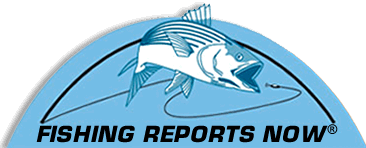Weakfish Biomass Plummets to All-Time Low
From the Atlantic States Marine Fisheries Commission:
FOR IMMEDIATE RELEASE, AUGUST 20, 2009
Weakfish Biomass at All-Time Low
ASMFC Weakfish Board Initiates Addendum to Address Stock Decline
ASMFC Weakfish Board Initiates Addendum to Address Stock Decline
In its report to the Atlantic States Marine Fisheries Commission's Weakfish Management Board, an independent panel of scientists endorsed the 2009 weakfish stock assessment for management use. The Review Panel confirmed that stocks are at an all time low and current fishery removals are unsustainable under existing stock conditions. It agreed with the stock assessment’s conclusions that weakfish abundance has declined markedly, total mortality is high, non-fishing mortality has recently increased, and the stock is currently in a depleted state. Given these findings, the Board initiated the development of Draft Addendum IV which will propose a range of options to reduce fishing mortality, including complete harvest moratoria and limited bycatch only fisheries.
"While the Board has been aware of the decline in weakfish landings over the past ten years, conflicting signals in the stock assessment models employed in the past confounded decision making. This peer review panel found the methodology acceptable and agreed that the stock is in dire condition," stated Board Chair Roy Miller. "Given the condition of the stock, the Board has decided to accelerate its management process and prepare a draft addendum for public comment in early fall. Upon considering public comment and final action on the addendum, the Board will have the option to implement the addendum’s measures through emergency action this November."
The weakfish stock is depleted at an all-time low of 2.9 million pounds (1,333 metric tons), far below the proposed biomass threshold of 22.4 million pounds (10,179 metric tons). At this stock size, recent fishery removals (landings and dead discards combined), estimated at 1.9 and 1.8 million pounds in 2007 and 2008, respectively, represent a significant proportion of the remaining biomass. While the decline in the stock primarily results from a change in the natural mortality of weakfish in recent years, it is further exacerbated by continued removals by the commercial and recreational fisheries.
Natural mortality has risen substantially since 1995, with factors such as predation, competition, and changes in the environment having a stronger influence on recent weakfish stock dynamics than fishing mortality. Given current high natural mortality levels, stock projections indicate that the stock is unlikely to recover rapidly, even under a harvest moratorium. In order to rebuild the stock, total mortality will need to be reduced, although this is unlikely to occur until natural mortality decreases to previous levels. On a positive note, juvenile abundance surveys indicate that young-of-the-year weakfish continued to be present in numbers similar to previous years, suggesting that recruitment at this point has not been severely limited in spite of low stock size.
The Board has placed the Draft Addendum on a faster timeline than standard addenda. Staff and the Plan Development Team will prepare a draft for Board review and consideration in mid-September. If approved, the draft will then be made available for public review and comment. It is anticipated that the majority of states will be conducting public hearings of Draft Addendum IV in October; a press release will be issued on those hearings once the information is available. The Board will meet again in November to consider public comment and take final action on the Draft Addendum. Under Commission procedures, the Board may opt to implement the Addendum under emergency action, with approved measures taking effect immediately upon Board action.
For more information, please contact Nichola Meserve, Fishery Management Plan Coordinator, at (202)289-6400 or <nmeserve@asmfc.org>.
###
Tina Berger
Public Affairs Specialist
Atlantic States Marine Fisheries Commission
1444 I Street. NW, Sixth Floor
Washington, DC 20005
Phone: (202)289-6400
FAX: (202)289-6051
Email: tberger@asmfc.org
www.asmfc.org
ASMFC Vision: Healthy, self-sustaining populations for all Atlantic coast fish species or successful restoration well in progress by the year 2015.





